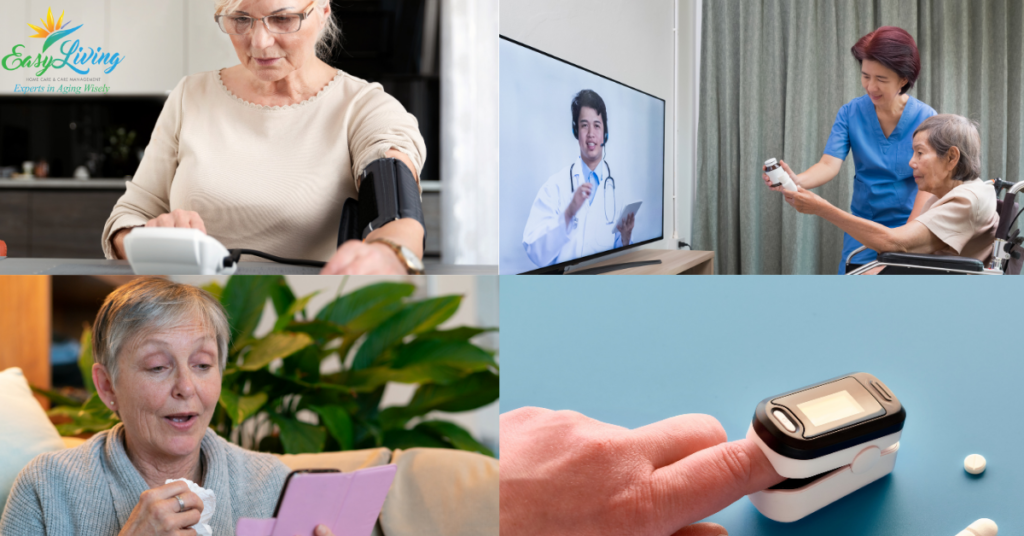Many medical professionals and health systems have moved forward rapidly to deploy telehealth in light of COVID-19 precautions. Medicare even made exceptions to their rules to allow for easier access and payment for telehealth.
Given this rapid adaptation, your doctor may be new to telehealth. They may be learning along with you how to communicate, observe and provide treatment electronically. Their frustration with electronic equipment may be communicated in their tone or facial expression. On the other hand, the electronic visit may be more personal in nature as the doctor is not moving from room to room. Both parties may need patience during the early telehealth appointments. But, this can be an excellent way to receive the medical care you need while staying safe with social distancing.
Tips for Your Telehealth Appointment
Setup
1. When you call to set the appointment, ask what information you can provide in advance. Be ready to provide the best method to reach you. Telehealth may be provided by telephone or video, or both.
2. If the doctor has an online portal, ask how you can get access and set it up prior to the appointment.
3. Establish a place in your home where you have a strong internet connection, can sit still and be seen on your computer/tablet/phone without interruption and good lighting. Test your speakers and webcam (if using video).
4. Have your current medical insurance information with you. Alert the doctor if you have recently moved and have an address change or any other payment/insurance changes.
Preparation
5. Prepare an update to your medical history and any new diagnoses or medications.
6. Prepare a list of most recent doctors seen and the reason for those appointments.
7. Gather a list of your current medications and why you think you are taking them. Include all over the counter medications as well as vitamins and supplements. If you are using alcohol or any other substance, report your use truthfully.
8. List of any vaccinations you may have received in the last year, for example, the flu shot.
9. Have the name of your pharmacy, the address, and phone number readily available. Call in advance to confirm the pharmacy provides home delivery. Most pharmacies are doing this now, even if they were not before.
10, If you are a Medicare beneficiary take the time to update your MyMedicare.gov with your health information and create a report to share with your doctor.
11. Document and be prepared to share your current body temperature, weight, heartbeats per minute, and blood pressure.
12. Think through your reason for the telehealth appointment. What is your primary concern? Write down your primary concerns. If you have more than one, place them in order of importance to you. Read it back to yourself out loud to make sure it communicates your concerns appropriately.
13. Prepare a list of any symptoms you have or have recently had so you remember to tell the doctor. Try to make notes as they are happening. What proceeded the symptom? What did you feel (describe the pain or what happened, such as level of pain, stabbing versus steady, etc.)? How long did it last? Has it recurred?
During the Telehealth Appointment
14. Be prepared to take notes while the doctor speaks so you can write down questions you may have about what they are saying. It is okay to ask for clarification.
15. Ask why they are recommending a specific treatment and what result they anticipate from the treatment.
16. Ask about your health overall and what you can do to improve your health.
17. Find out what your next steps are. What should you be observing and when should you call their office? When do you need to schedule another appointment? Make notes about the treatment and follow up. Review these after the appointment and contact the doctor/office via phone or your online portal to ask any clarification questions. Put any follow-up appointments on your calendar.
Get the most out of your telehealth appointments with these steps. Your responsibility is to be prepared, communicate clearly, be knowledgeable about your own health, and to get the answers to your most important concerns and questions.
Need help? Want better results?
Our patient advocates can help you organize your medical information, prepare for appointments, set up telehealth and the technology for you, communicate with your doctors and coordinate care between providers. We offer free phone or video consultations. Call 727-447-5845 or 813-333-5020 or click the button to schedule.







